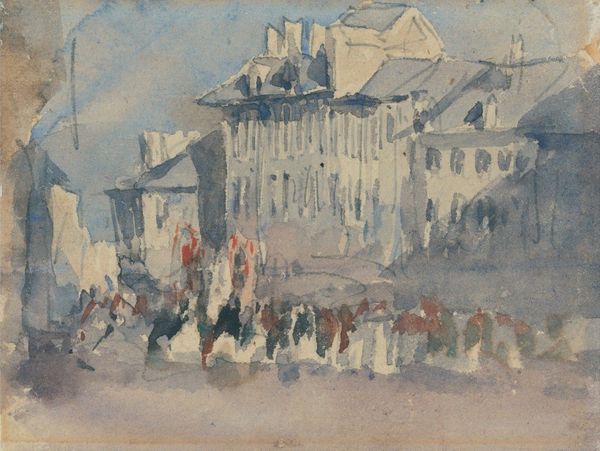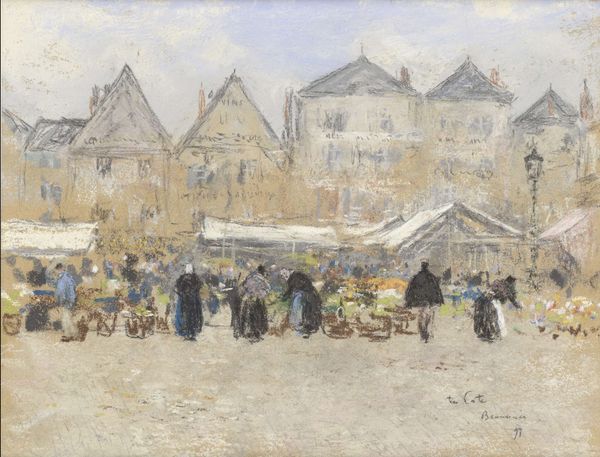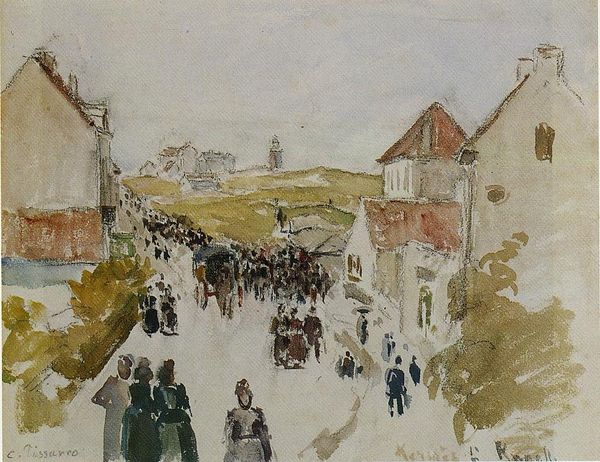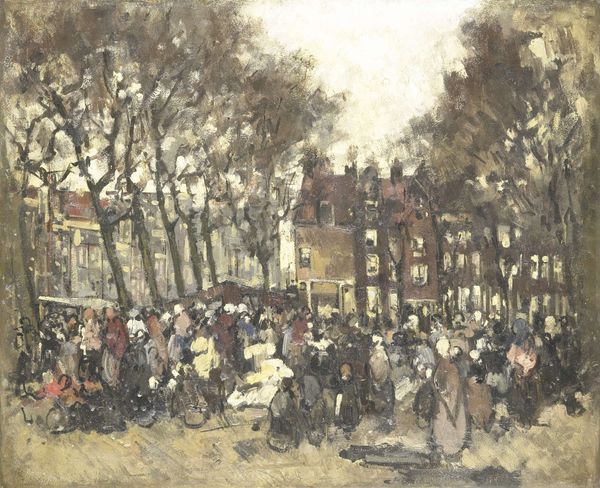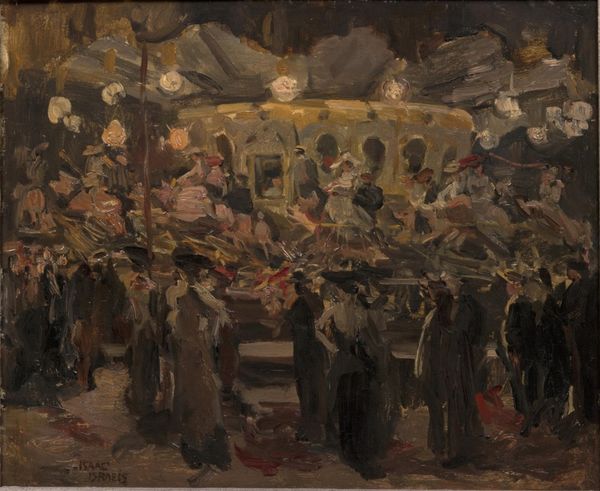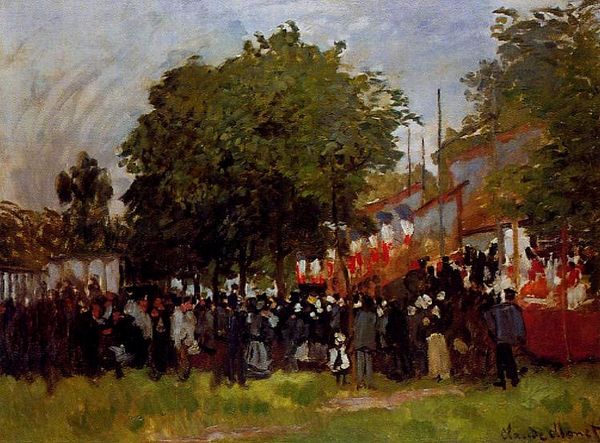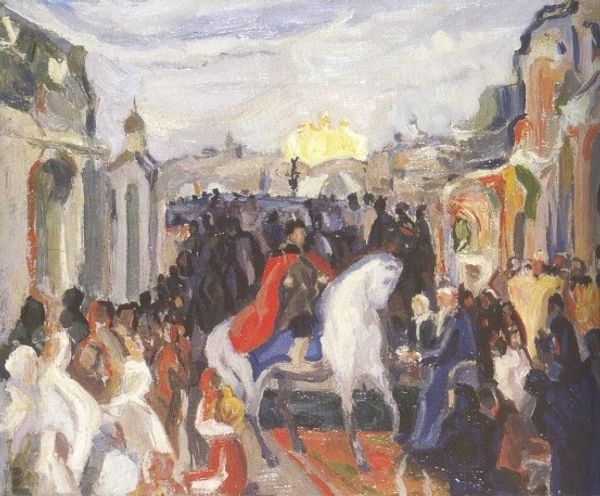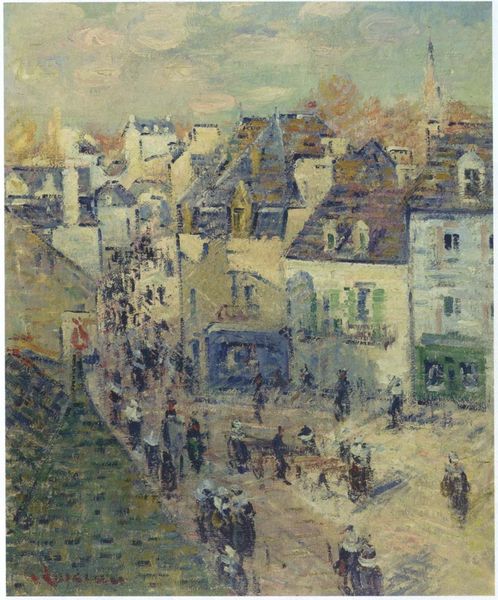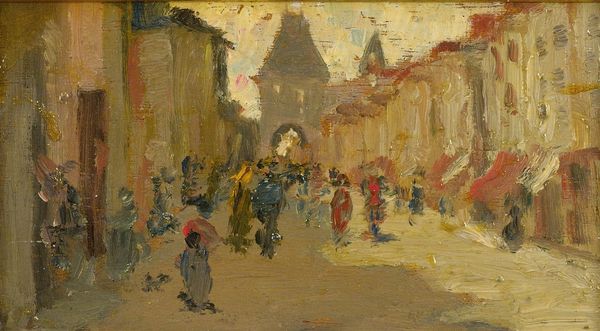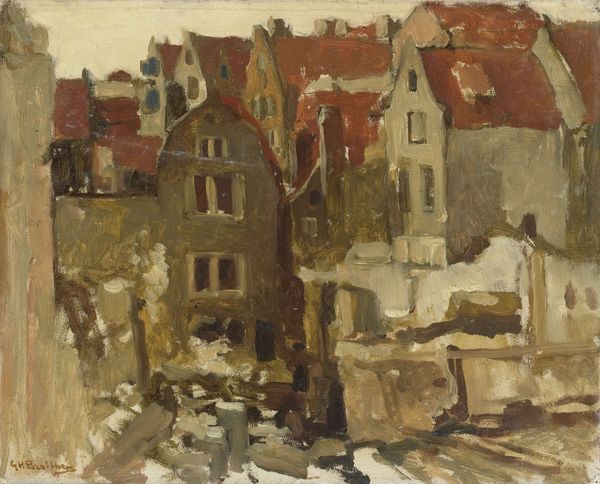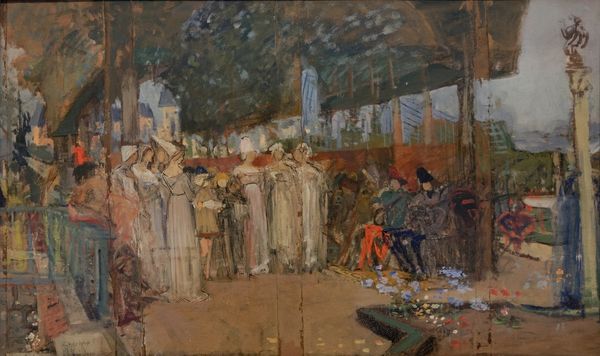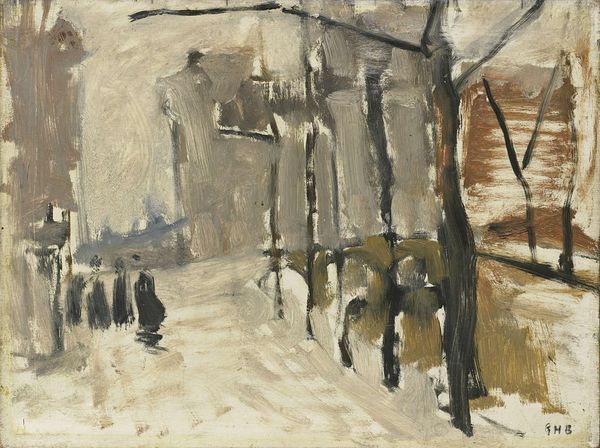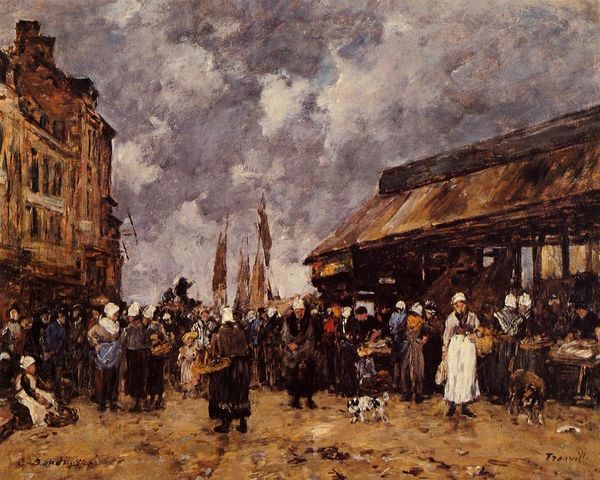
Dimensions: 44.5 cm (height) x 32 cm (width) (Netto), 53 cm (height) x 40.1 cm (width) x 3.7 cm (depth) (Brutto)
Curator: Welcome. Today, we’re looking at Albert Gottschalk's “Marked på Stege Torv,” painted in 1892. It’s an oil on canvas, housed right here at the SMK. Editor: What a lively scene! The eye is immediately drawn to the hustle and bustle of the market, the sheer density of people captured with these visible, textured brushstrokes. I wonder what they were selling. Curator: This work provides insight into Danish civic life at the close of the 19th century. Market days like these were central to community identity and economic activity, of course. You can sense the flag in the background points to patriotic values deeply intertwined with local commerce and community gatherings. Editor: Yes, it seems even the architecture, the buildings almost seem to lean in towards the throng, are active participants in the process of exchange that constitutes the painting’s focus. Did Gottschalk often paint marketplaces? Curator: He often focused on Danish landscapes and cityscapes, exploring everyday life and capturing the nation's changing urban environments. But this particular painting presents an interesting convergence between the commercial and social role of public space and his artistic inclinations. He really captured that. Editor: I'm struck by the somber palette, though. It reflects a certain austerity in materials of that era – dark textiles in their garments. I am left wondering about the availability and trade of dye materials. Also, I’m drawn to the almost hasty execution in rendering each individual; not truly a portrait of individuals, rather a study of the market's impact. Curator: Certainly. The darker tones might mirror the sociopolitical climate. And the technique of suggestion over strict realism really situates Gottschalk among his impressionist contemporaries. His impressionistic method, rather than creating detailed studies of each character, mirrors the energy of the scene and its broader significance. Editor: It reminds me how profoundly social histories and our understanding of materiality can alter how we see artwork like this. It also challenges what art is for; is it decorative or utilitarian? Here Gottschalk points towards the material networks enmeshed in market dynamics by visually weaving together human forms as part of larger commodity streams! Curator: An absolutely crucial reminder that art is rarely made in a vacuum. Editor: This work really illuminates for me the intersection of commodity, citizenship, and how an artist, via paint, depicts their meeting. Curator: Precisely, an excellent way to put it. The market is more than just a physical location, it is also the social and economic center of gravity. Thank you for joining me, I do hope you enjoy your visit today.
Comments
No comments
Be the first to comment and join the conversation on the ultimate creative platform.

